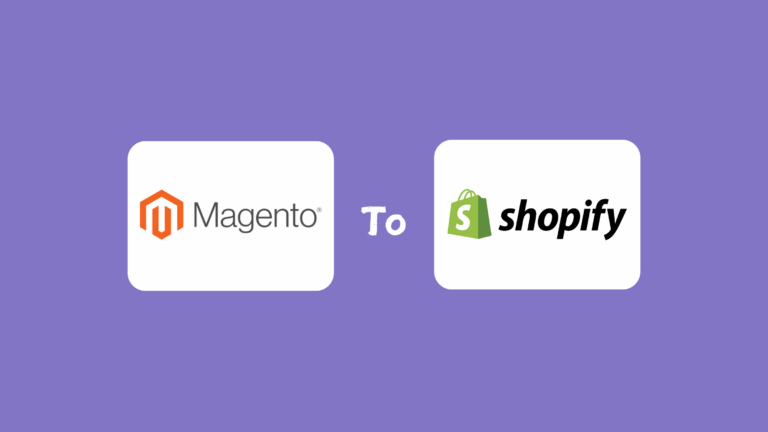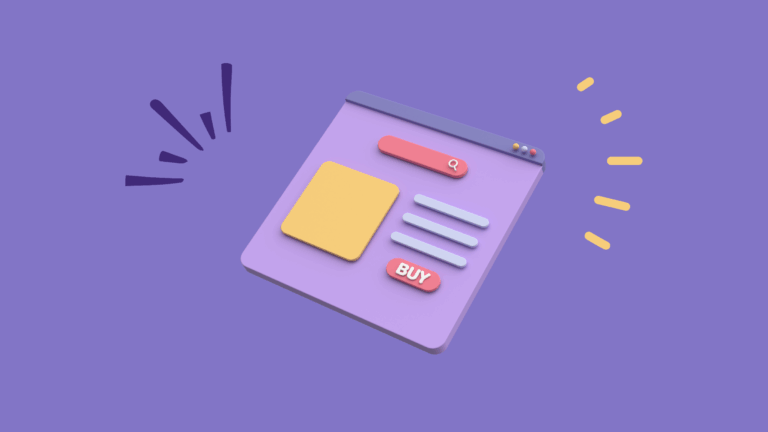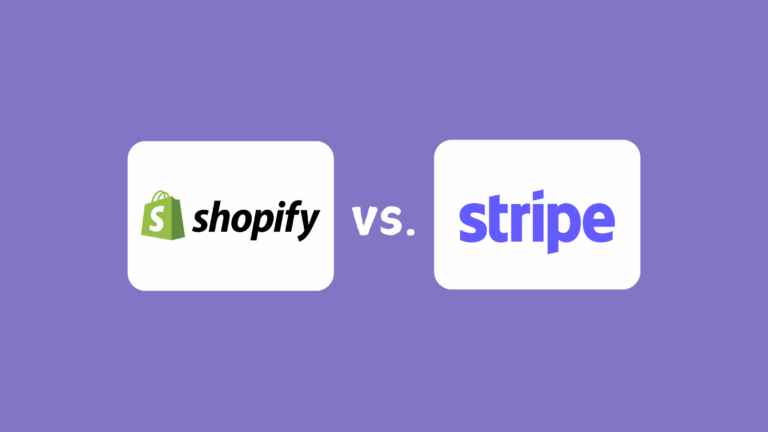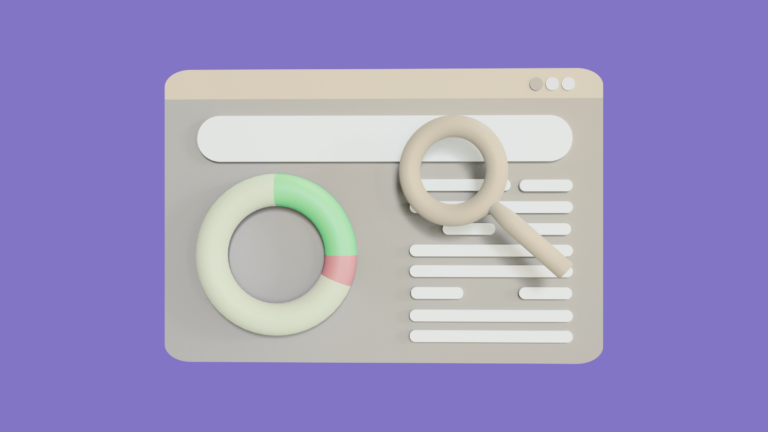Convert Shopify Store to App: Everything You Need to Know in 2025
Turning your Shopify store into a dedicated mobile app is easier than ever, opening up fantastic opportunities for deeper customer engagement and new sales. Gone are the days when custom development was the only route, demanding huge budgets and long timelines. Now, user-friendly Shopify app builders have emerged as a powerful solution. This trend is booming, with mobile apps dominating digital time and mobile commerce sales continuously soaring. So, should your Shopify store join this revolution? And if so, what’s the smartest way to do it? This comprehensive guide will walk you through deciding if an app is right for you and explore the best paths to building it.
How to Know If Your Store Needs an App
Deciding whether a dedicated mobile app is right for your Shopify store can feel like a big step. But by looking at a few key indicators, you can get a clearer picture. Here’s what to consider:
1. Mobile Traffic
Take a look at your website analytics. If over 50-60% of your traffic comes from mobile devices, an app could dramatically improve your customer’s experience. Mobile browsers can sometimes be slower or less intuitive than a dedicated app. Tools like Google Analytics or Shopify Analytics can show you your mobile versus desktop traffic split. If mobile users are dominating, an app might just be what you need to reduce bounce rates and boost conversions.
2. Repeat Purchases
Do your customers frequently return to make additional purchases? If so, an app can enhance loyalty by offering push notifications for promotions, restocks, and abandoned cart reminders. Apps also provide faster access than mobile websites, making it easier for repeat buyers to shop.
3. Analyze Competitors
It’s always smart to see what your rivals are doing. If successful competitors in your niche already have apps, it’s a strong signal that your customers might be expecting one too. Check out apps from similar brands—do they have high download numbers and positive reviews? Certain industries, like fashion, beauty, and grocery, naturally see a greater benefit from apps due to higher engagement and more frequent purchases.
4. Your Store is Visual-Heavy
If your products truly shine through high-quality visuals, AR try-ons, or stunning 3D previews, an app provides a far superior showcase than a mobile site. Features like swipeable galleries, seamless zoom functionality, and AR-powered virtual fitting rooms just work more fluidly within an app.
5. Subscription-Based Products
If you offer subscription-based items—think skincare, supplements, or meal kits—an app can simplify recurring orders for everyone. Customers really appreciate auto-renewal reminders, easy subscription management tools, and exclusive app-only perks, all of which can significantly boost your retention rates.
6. Ask Your Customers
Before diving into app development, why not go straight to the source? Survey your audience through email or social media polls. Ask them directly if they’d prefer using a mobile app for shopping on your website, what features they’d love to see. This direct feedback is invaluable for validating demand before you invest time and resources.
Convert Your Store with Shopify App Builders
For merchants unsure about the significant investment of time and money required for custom app development, this option is designed for speed and ease. Most importantly, it’s an excellent choice for businesses seeking a highly functional, branded mobile app without the complexities of traditional app development.
So, how do you get started? Here are the key steps to transforming your Shopify store into a dynamic mobile experience:
1. Choose Your Shopify App Builder
The first crucial step is to research and select a Shopify app builder that perfectly aligns with your specific business needs. Popular options include MobiLoud, Tapcart, and Shopney. As you evaluate different platforms, prioritize key features that will optimize your workflow and operations, both now and in the future:
- Native App Development Support: While “no-code”, ensure the builder generates truly native iOS and Android apps for the best performance and user experience, not just wrapped web views.
- Seamless Shopify Integration: Verify robust, real-time sync for store data, including Product Syncing (Automatic updates for product details, inventory levels, and pricing), Order Management (Orders placed in the app should appear seamlessly in your Shopify admin), Customer Data Synchronization (User accounts, wishlists, and order history should be consistent across both platforms).
- Customization Options: Check the breadth of design flexibility (templates, color schemes, fonts) to match your brand.
2. Design & Customize Your App
Once you’ve chosen your app builder and connected it to your Shopify store, the exciting part begins: aligning the app’s visual identity with your existing branding. This means meticulously configuring elements like your app icon, splash screen, color scheme, and fonts to ensure a consistent and familiar customer experience.
Shopify app builders typically offer a diverse range of theme options. Take your time to explore these, selecting one that best fits both your aesthetic vision and your required features. Beyond the visual appeal, focus on setting up intuitive navigation. Ensure your product pages are easy to read, images are high-quality and engaging, and the entire user flow—from initial Browse to the final checkout—is smooth and efficient.
3. Integrate Essential E-commerce Features
Now it’s time to configure the necessary e-commerce features that will make your mobile app truly functional and engaging. It’s absolutely essential to confirm that your chosen app builder natively supports all the functionalities you plan to implement. Beyond the standard, yet crucial, features like effective filters, smart sorting, quick ‘add to cart,’ and convenient one-tap checkout, the mobile app environment particularly benefits from the following:
- Engagement Tools: Configure vital features such as loyalty programs and in-app chat functionalities. These are powerful tools for maximizing customer experience and fostering long-term retention.
- Push Notifications: These are indispensable for re-engaging customers. Utilize them for abandoned cart reminders, timely new product alerts, exclusive special promotions, and real-time order status updates.
- Customer Account Management: Empower your users to seamlessly manage their accounts directly within the app. This includes viewing their order history, managing shipping addresses, and updating personal profiles with ease.
- Wishlists: Implement wishlist functionality, allowing users to conveniently save desired products for future purchase or consideration.
- Advanced Product Viewing: Consider incorporating features that truly enhance the shopping experience, such as 3D product views, augmented reality (AR) previews, and even AR try-on capabilities. These can significantly boost buyer confidence and satisfaction.
4. App Submission to iOS and Google Store
This marks a critical final step in launching your mobile app to the world. Fortunately, many Shopify app builders offer significant assistance throughout the often-complex app submission process.
Some builders will even manage the bulk of this process for you. They might do this either through their own established developer accounts or by requesting access to yours, simplifying a traditionally challenging stage.
Developing with Custom App Development
1. Detailed Planning
Every successful custom app begins with thoughtful planning. This initial phase is all about defining every single aspect of your app. Generally speaking, two essential areas demand your full attention:
- Budget & Timeline: Be prepared for a substantial financial commitment. Custom app development typically requires a significant budget, often starting from $50,000 and easily extending to $500,000 or more. Alongside the budget, you’ll need to establish a realistic timeline; expect the journey from initial planning to final launch to span at least 3-6 months.
- Comprehensive Feature Definition: This is where you outline every unique functionality your app will possess. Think beyond the basics – we’re talking about advanced augmented reality (AR) try-ons, AI-driven personalized recommendations, or loyalty program mechanics tied to specific in-app behaviors. No detail is too small.
2. Core Development & Shopify API Integration
This is often considered the most intensive part of the entire process, where your vision truly starts to take shape. It generally splits into two critical components:
- Coding & Architecture: Your development team will write the app’s entire codebase from scratch based on the chosen tech stack and detailed specifications.
- Shopify Backend Integration: Your custom mobile app acts as the “frontend” (what the user sees and interacts with), while Shopify remains your “backend” (managing products, inventory, orders, payments, etc.). The app communicates with Shopify via APIs to ensure seamless data flow.
The good news is that Shopify offers a comprehensive set of APIs that can save your developers a tremendous amount of work. To give you a general idea of the coding involved, let’s take a quick look at some key APIs:
- Shopify Storefront API: This is the absolute cornerstone for your customer-facing mobile app. It’s what allows your app to read public store data – everything from fetching product details (images, prices, variants) to displaying collections and accessing blog posts. It also enables customer-facing actions like managing shopping carts, applying discounts, and initiating the checkout process.
- Shopify Buy SDKs: For developers building truly native iOS or Android apps, Shopify provides Buy SDKs. These are pre-built libraries that sit on top of the Storefront API, simplifying common e-commerce operations. They offer ready-to-use methods, reducing the need for your team to write raw GraphQL queries from scratch.
- Shopify Admin API: While primarily designed for merchant-facing applications, there are certain scenarios where your customer-facing mobile app might need to use the Admin API. You’d typically leverage this if your app includes backend operations or needs to manage more sensitive store data, such as directly updating customer profiles or retrieving detailed order information beyond what a customer normally sees.
Beyond these core Shopify APIs, you’ll likely need to integrate third-party APIs depending on your specific business needs. This could involve connecting with external payment gateways (if you’re not solely relying on Shopify’s native checkout), review platforms, marketing automation tools, or even your fulfillment partners.
3. App Submission
Once your custom app is fully developed, rigorously tested, and polished, the final step is to submit it to the Apple App Store and Google Play Store. This isn’t just a simple upload; it involves preparing a comprehensive set of assets and ensuring strict adherence to each platform’s unique and often stringent guidelines.
Here’s what you’ll typically need:
- Developer Accounts: You’ll need an active Apple Developer Program account (currently $99/year) and a Google Play Developer Program account (a one-time $25 fee). These are your official gateways to publishing.
- App Assets: Prepare high-resolution app icons, compelling screenshots and preview videos, detailed descriptions that highlight your app’s features, a clear privacy policy URL, and correctly set categories and age ratings.
- App Binary: The app’s actual code, known as the app binary (IPA for iOS, AAB/APK for Android), must be properly signed and optimized for distribution.
Comparing Your Options: Shopify App Builder vs. Custom App Development
Deciding how to get your Shopify store onto mobile can feel like a big decision. On one hand, you have the promise of speed and simplicity with app builders. On the other, there’s the allure of complete control and unique features that come with custom development. Both paths have their merits, catering to different needs, and budgets.
To help you visualize these distinctions, here’s a comparative table breaking down the key aspects of each approach:
Shopify App Builders vs. Custom Development: A Comparison
| Feature/Aspect | Shopify App Builders | Custom App Development |
|---|---|---|
| Speed to Market | Days to a few weeks | 3-6+ months, often longer |
| Cost (Initial) | Generally lower (monthly subscriptions, tiered pricing) | Significantly higher (typically $50,000 – $500,000+) |
| Customization | Good, but limited by builder’s templates and features | Unlimited design freedom and unique feature implementation |
| Complexity | Low (no-code/low-code, drag-and-drop interfaces) | High (requires specialized development skills, coding from scratch) |
| Control | Relies on builder’s platform and updates | Full ownership and control over code, features, and updates |
| Maintenance | Handled largely by the app builder | Requires ongoing in-house team or agency for updates, bug fixes, and security |
| Scalability | Generally good, but can face limitations with highly complex or niche requirements | Highly scalable, built to grow precisely with your business needs |
| Ideal For | Businesses seeking quick launch, cost-effectiveness, standard e-commerce features | Businesses needing highly specialized features, unique UX, or specific integrations |
| Required Skills | Minimal technical knowledge | Proficient development team (in-house or agency) with expertise in mobile development & APIs |
Final Thoughts
Ultimately, choosing the right path—whether a Shopify app builder or custom development—comes down to your unique business goals. App builders offer incredible speed and efficiency, perfect for quickly launching a functional app without deep technical expertise. Custom development, while a bigger investment in time and money, provides unmatched flexibility for truly unique features and complete control. By carefully weighing your budget, desired features, and long-term vision against the insights from your customer base and market, you can confidently decide how to transform your Shopify store and unlock the full potential of mobile commerce!





